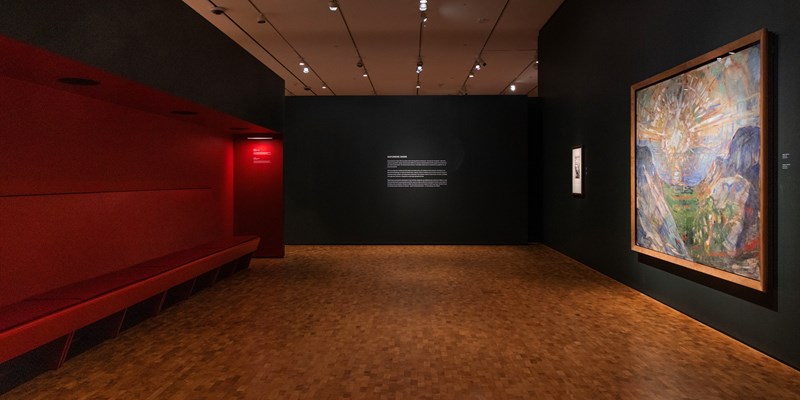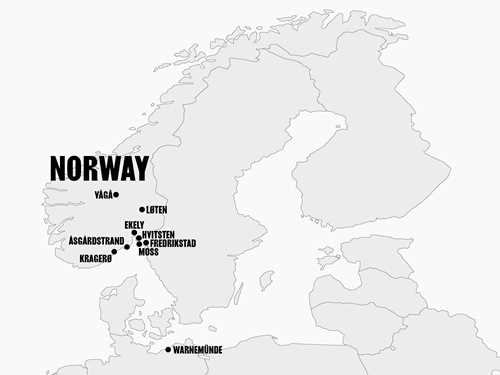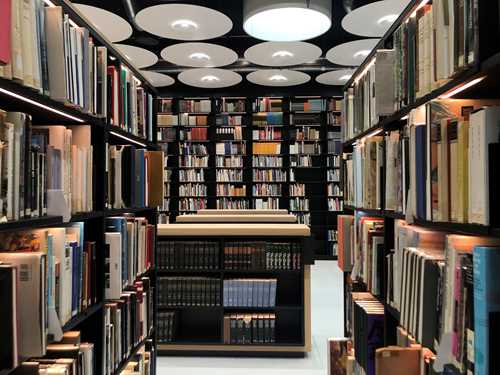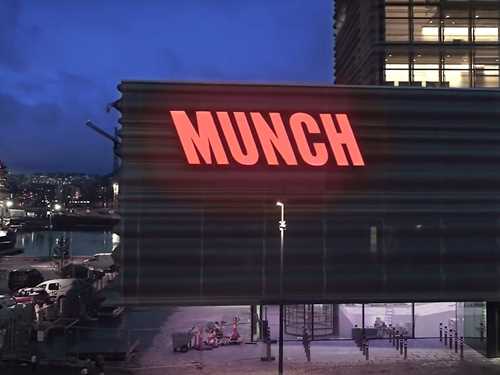Interview with Lost Girls
In the room ‘A Scream Through Nature’ in the Trembling Earth exhibition, a bench is set into a recess in the wall. As you reflect on Edvard Munch’s painting The Sun, and lithographs of The Scream and Anxiety hanging together on one wall, music comes from speakers above your head. This is Join the Sound by the Norwegian duo Lost Girls, a commissioned sound work. Here we speak to Jenny Hval and Håvard Volden about their creative process.

Lost Girls. Photo: Signe Fuglesteg Luksengard.
MUNCH: How did you approach this commission?
Håvard Volden: First we printed out the images that were going to be in the room.
Jenny Hval: We ‘made’ the exhibition room, and at various points had super-bad printouts of the paintings hanging on the wall.
HV: We had The Sun in front. We knew that was going to be the big one. And then just fooled around with sounds and found some that worked.
JH: Later, we arranged the speakers in formation as well, for the multichannel work. Then we each went into this room at various times: first you (Håvard) were there, then I went in, and we started a couple of ideas each. Eventually something just clicked. So it was actually a really nice conversation that we were having.
What kind of conversation were you having with Edvard Munch?
HV: I mean, for me, I haven't read too much about these paintings. But I mean, having the sun rising – for me it’s rising, maybe for others it's going down?
JH: Half full or half empty?
HV: And then you have The Scream and Anxiety on each side. For me, Anxiety and The Scream are saying, there is no hope. So it's like, going from there to The Sun in the middle. These two fighting each other.
JH: The main feature is nature itself. In my words, I tried to focus on this idea of the ‘scream through nature’, which is a very often quoted line from Munch. I tried to write something based on a conversation with my father about his tinnitus. I suggested that it's not in your head, it's actually everywhere. So in that sense, the sun's definitely going down – the lyric is a little more apocalyptic.
One idea in this exhibition is that nature is a much bigger part of Munch’s art than we previously thought. How do you relate that thought to music making?
JH: We’ve named the work Join the Sound, and I do feel when I'm performing or creating something that I just kind of hop on a jetstream that's already there, and join it. You have your way of existing in your body and your everyday and then you have this jetstream that's there, that's also a parallel existence. That, to me, has very much to do with sound.
HV: I remember reading a book of writings by this Indian guru, and the book opens with ‘Everything started with the sound.’ We had some talks about this book.
Did you both have a relationship with Munch’s art before doing this project?
JH: You can’t avoid having a relationship. He's like God, and you can't avoid him in school. That's how we've grown up, to think that Munch is Norwegian painting. That's also something that, at certain points in my life, has made me avoid all of Munch’s work, because I like to tear this father figure down in order to understand whether I can enjoy art at all. I grew up going to the old Munch Museum a lot, and I remember being terrified. I had a very close relationship with some of the paintings as a small child. The way that you can see hair merging with another person's body and quite visceral things like that.
How do you think your sound work will enhance people’s experience of The Sun and The Scream?
JH: I constantly thought of my own visits to museums, and the moment when you get to sit down and take a little break. Then you can look at something for a longer, extended period, and you bring out your notebook. So I feel that the bench is like a little notebook, and a way to approach something that's universal and sublime. There will be a tiny room created in the big room, or a smaller space in the bigger space.

Photo: Ove Kvavik © Munchmuseet





